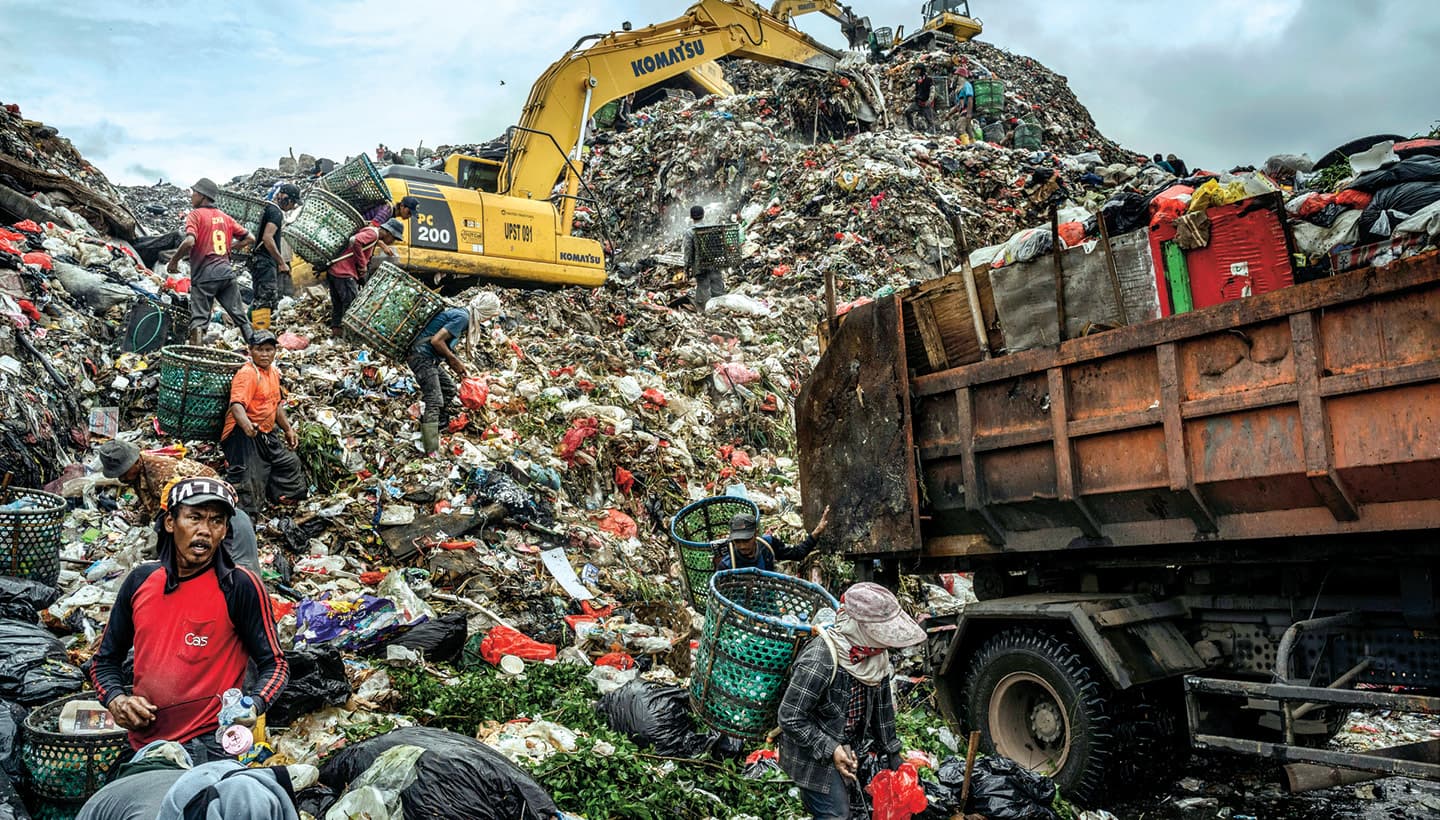Even in the pouring rain, in the middle of the night, they are out scavenging, wearing headlamps to scan a mountain of rotting garbage more than 15 stories high. They use a hooked metal tool to flip items over their heads and into large baskets strapped on their backs. A few sort through the trash with their bare hands.
The stench is overpowering, but that’s just one of many workplace hazards. As they pick through the trash looking for discarded wood, cardboard, plastic tarps, and anything else that can be recycled, they must be careful not to come too close to the bulldozers distributing the waste across an ever-rising plateau. Landslides are a constant danger.
This is Bantar Gebang, one of the world’s largest landfills. It’s more than 200 football fields in size and accepts as much as 7,000 tons of waste a day from nearby Jakarta, Indonesia’s capital. Processing all that trash is a 24-hour operation. On a typical day, a thousand orange trucks, filled with garbage and surrounded by hordes of buzzing flies, wait to dump their loads. Giant excavators then relay the waste to the top, more than 150 feet above.
Dozens of squalid villages have sprung up around the mountain of trash. Officials say about 6,000 people live near the landfill, eking out a living from the waste. Local residents put the number at 20,000. Most of those who have migrated to Bantar Gebang were farmers whose crops failed. Some have stayed for a decade or more.
Even in the pouring rain, in the middle of the night, they are out scavenging. They pick through a mountain of rotting garbage that’s more than 15 stories high. They wear headlamps to scan the trash. They use a hooked metal tool to flip items over their heads and into large baskets strapped on their backs. A few sort through the trash with their bare hands.
The smell is overpowering. And that’s just one of many risks they face. They pick through the trash looking for scrap wood, cardboard, plastic tarps, and anything else that can be recycled. They must be careful. They can’t get too close to the bulldozers. Those large machines spread the waste across the ever-rising terrain. Landslides are a constant danger.
This is Bantar Gebang. It’s one of the world’s largest landfills. In size, it’s more than 200 football fields. It accepts as much as 7,000 tons of waste a day from nearby Jakarta, Indonesia’s capital. Processing all that trash is a 24-hour operation. On a typical day, a thousand orange trucks arrive. They’re filled with garbage and surrounded by swarms of buzzing flies. They sit and wait to dump their loads. Giant excavators then relay the waste to the top, more than 150 feet above.
Dozens of makeshift villages have popped up around the mountain of trash. Officials say about 6,000 people live near the landfill, using the waste to make money and survive. Local residents put the number at 20,000. Most of those who have come to Bantar Gebang were farmers whose crops failed. Some have stayed for a decade or more.

